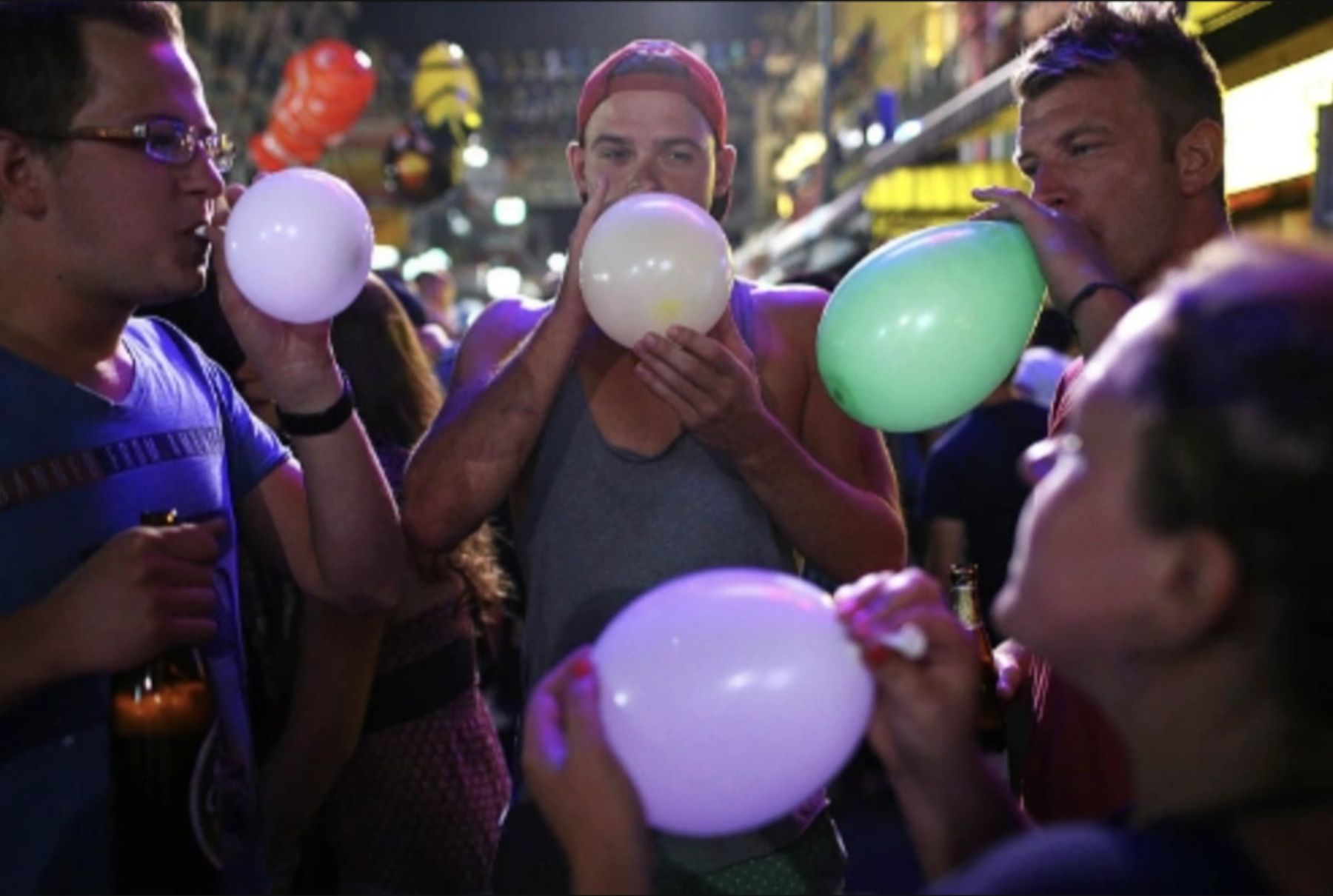Laughing gas, chemically known as dinitrogen monoxide or nitrous oxide (N2O), is often pumped into balloons known as "laughing balloons" or "Funkyball". It is considered by some young people as a recreational activity to relieve stress. Users inhale the gas from the balloon, creating a sense of excitement and euphoria, resulting in laughter.
Associate Professor Tran Hong Con from the Faculty of Chemistry at Vietnam National University, Hanoi, explained that N2O is a colorless, inorganic compound with a slightly sweet taste. It was used as a general anesthetic during World War I. In low concentrations, N2O activates the laughter center in the brain, creating a feeling of euphoria and happiness that lasts for two to three minutes. In modern medicine, it is rarely used alone and is often combined with other anesthetics as a pain reliever. The concentration and ratio of N2O are strictly controlled in other countries.
According to WebMD, laughing gas creates a sense of euphoria, but the effect only lasts for a few minutes, causing users to inhale repeatedly to maintain the high. This can lead to several risks, including low blood pressure, fainting, heart attack, oxygen deprivation, vitamin B12 deficiency, anemia, nerve damage, memory loss, and incontinence. Users may also experience depression, psychological dependence, loss of contact with reality, a weakened immune system, numbness and stiffness in the extremities, and tinnitus. Use during pregnancy can cause birth defects.
Laughing gas abuse also affects coordination, posing a danger if inhaled in places where falls could cause injury. It is even more dangerous to drive or operate machinery under the influence of laughing gas.
 |
Laughing balloons are commonly used by young people in bars and sidewalk cafes. Photo: Cardiffstudent Media |
Laughing balloons are commonly used by young people in bars and sidewalk cafes. Photo: Cardiffstudent Media
Hospitals have treated numerous cases of N2O poisoning due to prolonged inhalation of laughing balloons. Patients present with sensory disturbances, reduced mobility, numbness in the extremities, and difficulty walking. Many suffer spinal cord injuries, bone marrow loss, and nervous system damage due to this abuse.
According to Dr. Hoang Tien Trong Nghia, Head of the Department of Neurology at 175 Military Hospital, most patients admit to using laughing balloons for recreation, relaxation, or due to addiction. Many patients are well-educated but remain complacent, underestimating the harm of laughing gas, leading to abuse and severe health consequences.
"This substance has the potential for addiction and creates hallucinations, with a tendency to increase the dosage over time," Dr. Nghia said, explaining that once accustomed to the hallucinatory high, users are likely to seek stronger highs from drugs like ecstasy. Adolescents, whose nervous systems are still developing, are particularly vulnerable to the dangers of laughing gas.
Professor Con also warned that even at low concentrations, N2O can affect perception, impairing vision and hearing. Depending on individual physiology, users may experience lethargy, disorientation, staggering, sleep disturbances, irregular heartbeat, and anemia. Peripheral and autonomic nerves may become less active, numb, or fatigued. Inhaling a large amount of laughing gas in a short time can cause convulsions and tremors. For individuals with heart conditions, asthma, and other respiratory illnesses, prolonged N2O inhalation can lead to respiratory arrest.
In 2019, the Ministry of Health banned the recreational use of laughing balloons. N2O is only permitted for industrial production and is not for human consumption unless prescribed by a doctor.
Dr. Nghia advises people, especially young people, to avoid using laughing balloons and other stimulants due to their potential for serious health consequences and impact on quality of life. He emphasizes the importance of raising awareness, adopting a healthy lifestyle through regular exercise, a balanced diet, and routine health checkups.
My Y












